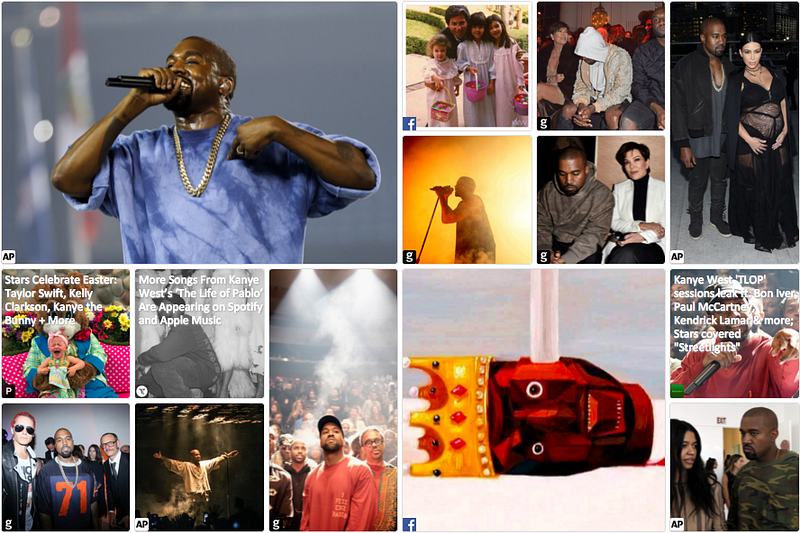Here long-time industry entrepreneur Kevin Arnold writes about how the direction of his company, OpenAura, marks a shift in the music industry, with revenue being earned from artist’s images, something has traditionally been free, instead of from their music.
_______________________________
Guest Post by Kevin Arnold on Medium
This week my company, OpenAura, made an announcement that signals the beginning of a new era for the music industry: previously artists got paid for their music, now we are helping them get paid for their images. Our first customer products have launched, the first royalty checks have been issued, and a new revenue stream is coming alive. I’ve been working towards this goal for years, so I wanted to share why I started the company, and where I think the industry is heading.
I’ve been lucky to spend a large part of my life doing something very important to me: helping artists (and those that support them) make a living by helping them reach their audiences.
I guess I ended up having this particular drive once I gave up my high school dreams of rock stardom (peaked with a senior year talent show win!). I found my first behind-the-scenes calling in promoting concerts, at first on the campus of UC Berkeley and later with the Noise Pop Festival, which I started in 1993 and now continues to live on as a local business producing events and pushing culture around the SF Bay Area, including the Treasure Island Music Festival and DotheBay.com.
After riding the first tech wave of the early 90’s for a bit I was able to use my newfound chops in the budding digital music industry, running the data systems for the very first music subscription service, Rhapsody. The idea of “every song by every artist from every label anywhere in the world” being available via a “celestial jukebox” was inspiring, and led me to start the digital distribution company IODA in 2003 to help independent labels and artists make the most of this new opportunity. We ended up helping thousands of labels and artists (representing over 3 million tracks of music) build their businesses by getting placement within hundreds of music services around the world.
At the end of that journey, after a deal with Sony Music and subsequent merger with The Orchard in 2012, I thought I’d had enough of the digital distribution and aggregation business. I didn’t know what I wanted to do, but it wasn’t going to be content distribution.
But after just a few months of tossing ideas around I wound up right back in the content distribution business, this time doing something even crazier: creating a brand new market for artist imagery by building an API platform to curate and deliver the-latest-up-to-the-moment images to streaming services while compensating artists and creators for their role in making these images valuable. Basically, I’m aggregating and distributing content again, but this time charging for something that previously was given away.

Image from PhotoShelter Blog
The music industry has a long history of giving its product away promotionally. MTV and the radio airwaves were powerful promotional channels in their time, and YouTube remains indispensable today, even to streaming holdouts like Taylor. In some cases the industry was able to turn this around and create new revenue streams (though YouTube royalties remain a popular target and videos are now scarce on MTV), in other cases the fight continues to overturn decades of precedent (pesky terrestrial radio).
In the case of images, the business is larger and the stakes higher than in these lessons from the past. Images are the main currency of content consumption in a mobile-driven world. It’s what we, as digital consumers, do: scroll, swipe, flip, and browse through feeds and streams of image-rich media, drilling in for quick bites and moving on to the next tasty snack. And it’s people — artists, celebrities, and other influencers — that drive the content and attention behind this behavior, posting and re-sharing media to every corner of the internet, providing a platform for advertisers to reach massive audiences. Hundreds of billions in value have been created from this concept, dwarfing the equity value many artists and managers see being created in the digital music services.
Much like radio and video, images have been given away promotionally to attract attention. But it’s now becoming clear that images are the product, and this approach needs to be reconsidered. We use “windowing” with other forms of valuable content: using pre-release singles, exclusives, and streams to drive interest. This concept can be extended to imagery as well: using large networks to tease small bites of content and drive fans to be rewarded with exclusive image galleries, slideshows, or other media within platforms that pay them for their content and offer them more control of the fan experience.

A screenshot of the Kanye West grid view on OpenAura.com
This is where OpenAura comes in: in order to make this vision a reality, we not only have to gather, organize, and deliver an extraordinary amount of content, but we also have to organize what seems at times like a hopeless mess of rights and ownership. This giant soup of legal rights is much more fragmented and unorganized than music rights were during the early days of the digital marketplace. Beyond the large image catalogs of our partners Getty and AP, and the labels who all have deep images archives, there are thousands upon thousands of individual photographers that shoot live shows and chronicle the works of artists, as well as visual artists who create artwork and posters. Metadata is sparse, if it exists at all, and most organizations do not have any image asset management tools. Even today, there’s a lot of uncertainty around rights ownership. Few organizations can decipher the complicated legal landscape surrounding online imagery, lacking the resources to wade through decades of old agreements.
Today, we’ve built a highly efficient and automated platform that interfaces with customers, content partners, creators and artists via APIs and tools, bringing all of these parties together to create a better product. Ultimately, the platform will enable fans across the internets to enjoy rich, engaging artist experiences within their favorite music and media apps, instead of staring at a static square box of an album cover or an out-of-date publicity photo.
I’ve written about the goals of OpenAura for the digital music and entertainment service marketplace previously. We still have a long way to go, but our first customers and the royalties they help generate are a critical milestone towards our goals. Now, it’s up to the artists, photographers, and content owners to start thinking differently about their images and embrace the coming opportunities. We hope they will join us in writing this new chapter in artist revenue.